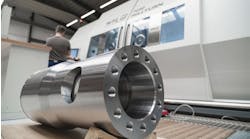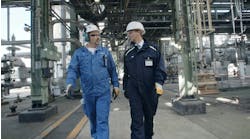Negotiating got underway in late July on a new labor agreement for the Big Three automakers and the United Autoworkers union. There's a lot at stake in these talks, as almost all the wire-service reporting routinely notes. But those discussions are primarily about money, so let's assume that neither side is going to throw up their hands and surrender. Nor, are they going to walk away, preferring to take nothing than the deal available to them.
In short, there will be a contract — and I will further speculate that the eventual contract will follow a common pattern for Chrysler, Ford, and General Motors. The uncertainty is whether the settlement will be enough to sustain the automakers, or even some of them. It won't take too long for that to be decided: the investment community will assess the prospects of the settlement, and reward and/or punish the automakers accordingly.
What's been virtually unreported, un-commented upon, is that these negotiations will shape the future of the UAW, too. Will the resolution will be good enough for the union to save its reputation as a force to be respected in the future?
It would be interesting to know more about their expectations in this, but UAW president Ron Gettelfinger isn't giving away much in these preliminary rounds: he claims the union has already made concessions to automakers, and he wants a four-year agreement that will hold the line on job and benefit cuts. Some unsourced reporting suggests the union will agree to allow the automakers to write-off retiree benefit obligations, and to scale back the extraordinarily profligate jobbank programs it has established for displaced workers. The UAW "knows what it takes" for U.S. automakers to regain competitiveness, we are assured by their anonymous spokespersons.
Let us hope so, but there has been very little to suggest that the union accepts the dire forecasts for Chrysler, Ford, and GM? Maybe they think there's more cash available to Ford and GM, as apparently there is for Chrysler under new ownership. Or, maybe they think there will be federal government intervention.
If they do not accept that grim outlook, the UAW would be wise to recall the last round of labor negotiations in the U.S. steel industry. Back in 2002-2003 the big steelmakers had already slashed thousands of jobs, LTV Steel had been closed, and Bethlehem Steel and several dozen other were idle and/or in bankruptcy. After decades of acrimony, the surviving steelmakers got the United Steelworkers union to accept a labor agreement that overhauled the wage structure, consolidated job classifications, and drastically cut employment levels even further than they had been trimmed by the faltering businesses. There was some federal role — in the form of import protection and a huge bailout of retiree pensions and benefits — and all this was the foundation of the impressive revival of the steel industry we now see. The U.S. still has a strong, vibrant domestic steel industry, one that's making unprecedented profits lately, but that has been the result of vast capacity consolidation and production-cost restructuring.
Does the UAW have this history in mind as it helps shape the auto industry's future — and it's own?










